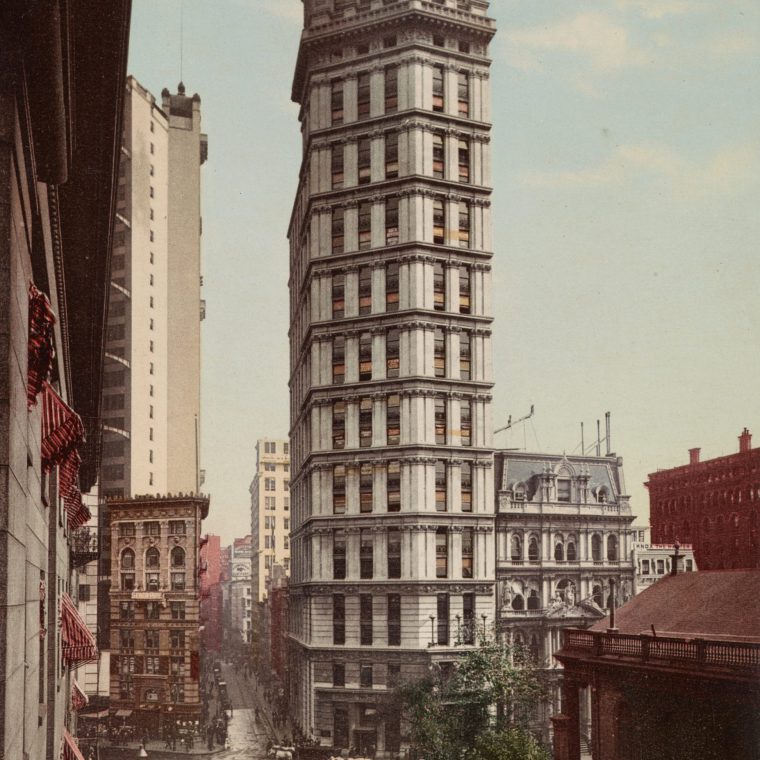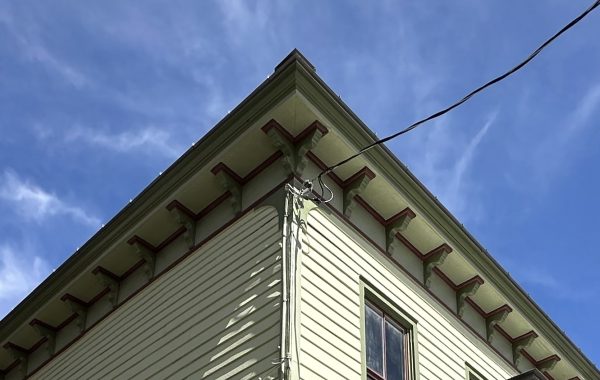I’ve attacked the concept of “structural honesty” in architecture here more than once, but every so often I hear someone use the phrase and feel like maybe I should give it another chance. I found an actual example – in a building that was unfortunately demolished in the 1950s, but was well-documented when it stood – so it’s time to take the “pro” side of the debate. Sort of.
That’s the St. Paul Building above, at the corner of Broadway, Ann Street, and the foot of Park Row. (The low building in the lower right corner is its namesake St. Paul’s Chapel, and the side of the Park Row Building can be seen on the far left.) This picture is from 1901 or so, when this was still among the tallest buildings in New York. There’s one specific architectural feature I want to draw your attention to: the tiers of the cake are each two stories high. The building is a good (or, really, bad) example of architects using a horizontally-oriented design for a vertically-oriented building, leading to the repetition of eleven separate water tables below the main cornice. In the main body of the building – from the third to the twentieth floor – there’s a water table every two floors. The division between the fourth and fifth floor is obvious, as there’s a big water table there; the division between the fifth and sixth floors is much less obvious.
William Birkmire, in The Planning and Construction of High Office-Buildings, was nice enough to give us a sketch of the curtain-wall supports (in section at the top, and in plan at the bottom) of this steel-skeleton building:

The architect, George Post, was trying to protect his columns from rust, so they’re located entirely inboard of the masonry wall. The wall is supported on a cantilevered bracket and secondary spandrel beams, located at every other floor. In other words, the every-other-floor pattern of the masonry is matched by an every-other-floor pattern to the underlying structure. This is structural honesty, just not in the kind of building that people who use that phrase have in mind. More importantly, there’s no evidence that the pattern to the facade masonry was meant to be reflective of the pattern in the steel. Does it count as honesty if you’re accidentally honest?




You must be logged in to post a comment.